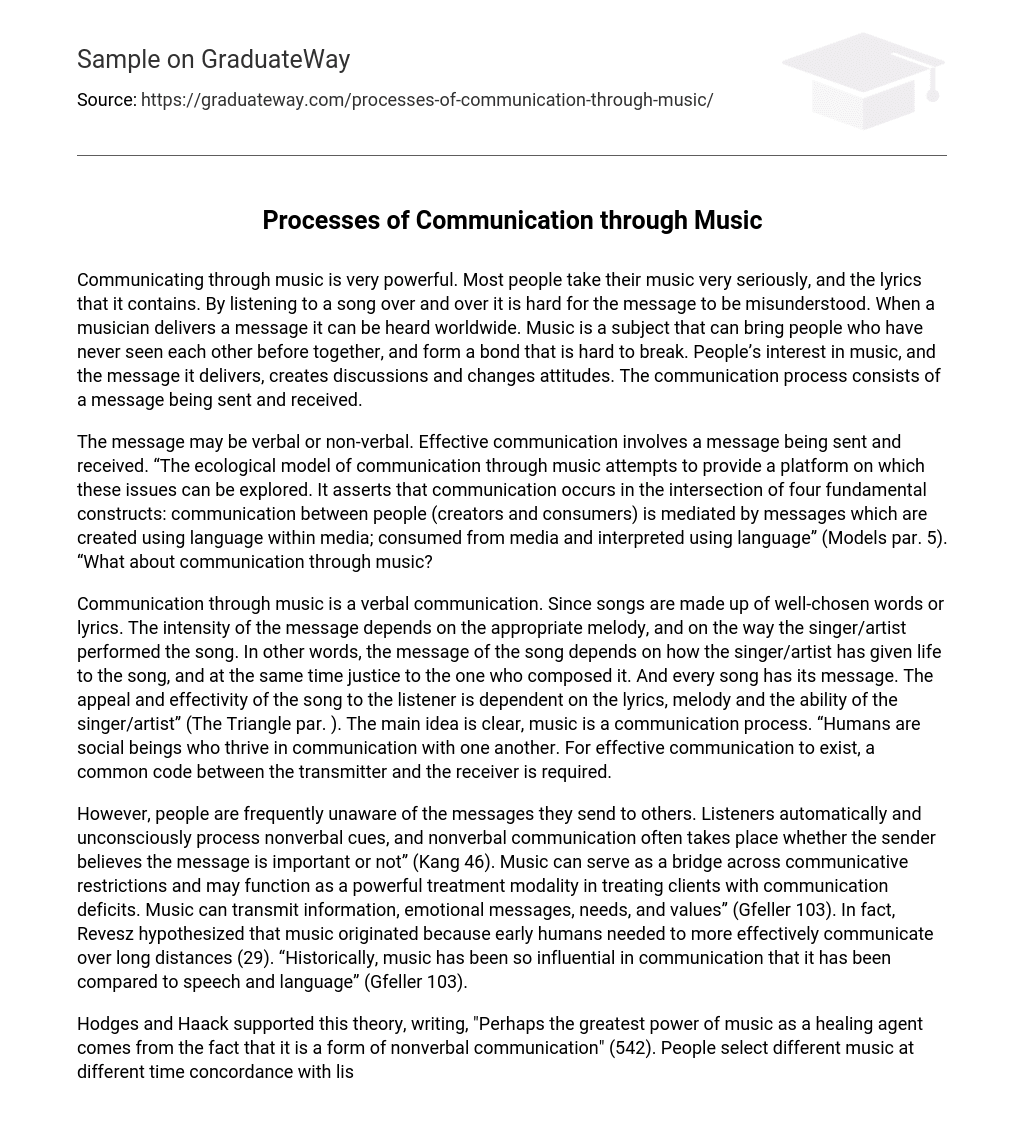Music has a powerful ability to communicate. It creates a deep connection with people through its lyrics and melodies. When we listen to a song repeatedly, we ensure that its meaning is not easily misinterpreted. Musicians can convey messages that reach and resonate with people worldwide. This universal appeal of music brings individuals together, forming lasting connections even between strangers. The interest in music sparks discussions and has the potential to transform attitudes. Ultimately, communication involves sending and receiving messages.
The ecological model of communication through music examines the different ways in which verbal and non-verbal expression takes place. It highlights the significance of both transmitting and receiving messages. As per this model, communication happens when individuals interact with messages crafted using language across various forms of media, consume media, and interpret these messages using language (Models par. 5). Therefore, where does music fit into this framework?
Music serves as a form of verbal communication, using lyrics and melodies to convey messages. The power and influence of the message are determined by the singer or artist’s performance. Each song carries its own distinct message, with its effectiveness and appeal arising from the combination of lyrics, melody, and the performer’s ability to bring it to life. Therefore, music acts as a medium for communication that enables effective interaction and understanding between individuals.
People often send messages to others without realizing it. Nonverbal cues are processed automatically and unconsciously by listeners, and nonverbal communication occurs regardless of whether the sender considers the message important or not (Kang 46). Music can act as a bridge in overcoming communicative limitations and can be a powerful therapy tool for individuals with communication deficits. Music has the ability to convey information, emotional messages, needs, and values (Gfeller 103). The hypothesis presented by Revesz suggests that early humans developed music as a means to communicate more effectively over long distances (29). Throughout history, music has been compared to speech and language due to its significant role in communication (Gfeller 103).
Hodges and Haack (542) suggest that music’s healing power lies in its role as a nonverbal form of communication. People select music according to their mood and objectives in a given moment, highlighting its capacity to impact emotions. Specific music genres can uplift spirits, thus relieving depression and stress.
Spiritual songs serve as a means for individuals to contemplate others and the afterlife, providing an effective method to diminish sins and dispel darkness from people’s minds. Hip Hop serves multiple purposes, inducing people to dance and facilitating communication by comprehending the artist’s perspective. Country music inspires people to embrace their country and its citizens. A notable instance includes Toby Keith’s empowering song “Courtesy of the Red, White and Blue,” which encouraged Americans to exhibit patriotism and courageously combat terrorism following the 9/11 attack. Music has become an integral part of the commercial world, with significant emphasis placed on contemporary musicians. They possess the ability to mirror or attempt to alter public opinion. Music frequently serves as a medium of expression for protests and played a significant role in the anti-Vietnam war movement. Presently, almost every disaster worldwide has its dedicated song aimed at raising funds or awareness.
Music serves as a universal tool for communication in our daily lives, connecting us when we share song links or create compilation CDs. The skill of listening should not be underestimated for personal and professional growth. According to statistics, writing accounts for about 9% of communication time, reading for 16%, talking for 30%, and listening for 45%. This emphasizes the significance of effective listening. Whether it’s through verbal or nonverbal means, music plays a crucial role in communication with ourselves and others by conveying messages and ideas.





